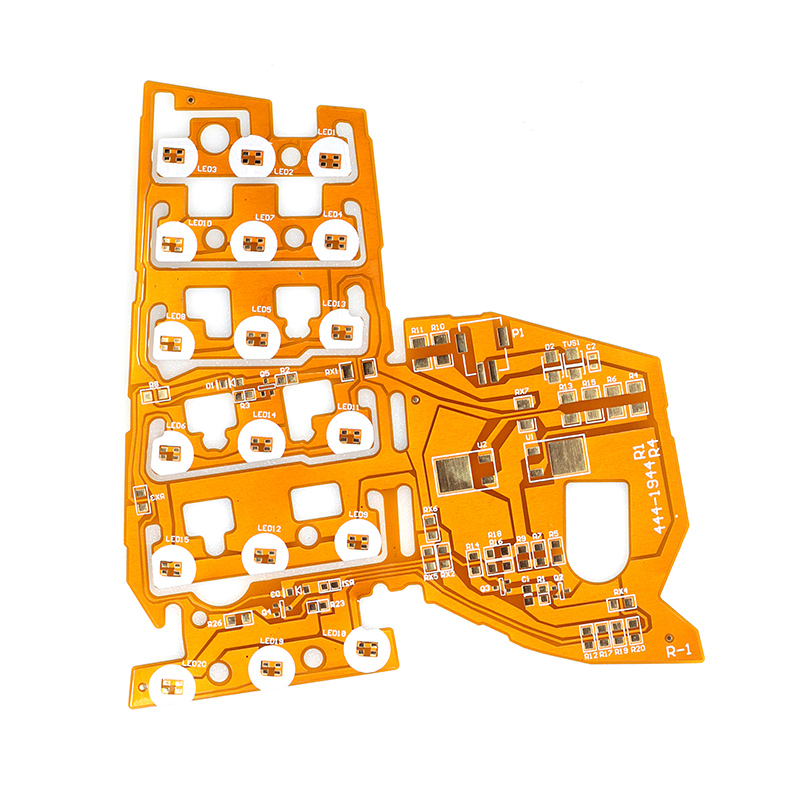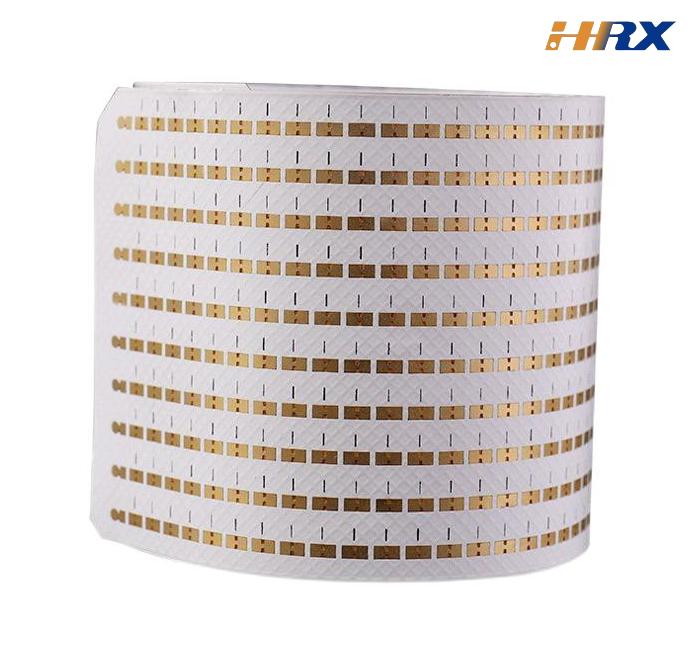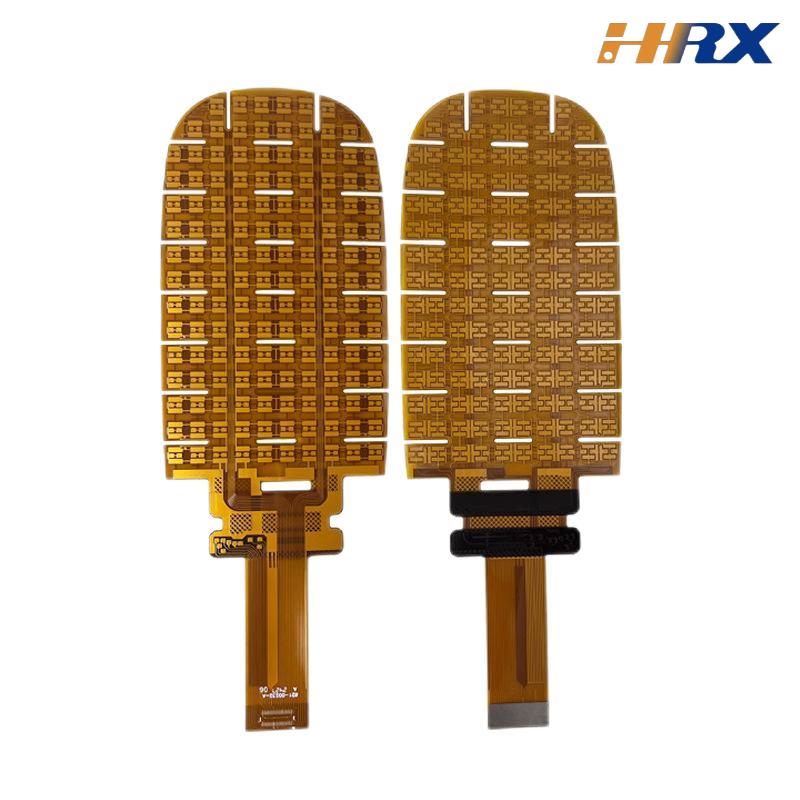Search
Key Points to Note in FPC Circuit Design
- Jan 03,2025
-
Share
Flexible Printed Circuits (FPCs), renowned for their remarkable flexibility and superior space-saving capabilities, have permeated a myriad of electronic devices across diverse industries. From the vantage point of circuit design, there are several quintessential aspects that necessitate our meticulous attention. As Shenzhen Huaruixin Electronics Co., Ltd., a leading enterprise specializing in FPC production and sales with profound industry acumen, we are pleased to present the following professional recommendations for your reference. And we wholeheartedly welcome our esteemed colleagues and valued clients, both old and new, to engage in an in-depth exchange and fruitful discussion.

1. Layout Consideration
The layout configuration of an FPC constitutes the bedrock of a successful design. Primarily, it is imperative to guarantee ample clearance between conductive traces to preclude short circuits, especially when grappling with high-density circuitries where trace proximity poses a heightened risk. Secondly, meticulous attention must be paid to the flex zone. Traces within this critical bending area should be artfully arranged, employing optimized routing strategies such as arc-shaped pathways to mitigate stress concentrations and avert potential cracking or fracturing during repeated flexural cycles. This is of utmost importance as it directly impacts the durability and functionality of the FPC.
2. Material Selection
The selection of appropriate substrate and coverlay materials is a pivotal decision point. Different application scenarios mandate materials with distinct properties. For instance, in thermally demanding environments like automotive engine compartments or high-power electronics, substrates and coverlays with exceptional heat resistance characteristics, such as polyimide-based materials with high glass transition temperatures, should be favored. Simultaneously, the adhesive integrity between the coverlay and substrate is non-negotiable to ensure robust circuit protection. Additionally, parameters like dielectric constant, which influences signal propagation speed and impedance, and moisture absorption rate, which can compromise electrical insulation and induce corrosion over time, must be carefully weighed as they can exert a profound influence on the overall electrical performance of the FPC.
3. Impedance Control
Maintaining precise impedance matching is the linchpin for safeguarding signal integrity, particularly in high-speed digital applications. In such scenarios, impedance mismatches can precipitate deleterious signal reflections and degradation, leading to data errors and system malfunctions. Designers are thus required to perform intricate calculations and exercise meticulous control over impedance by deftly adjusting parameters such as trace width, thickness, and spacing, in tandem with optimizing the dielectric constant of the employed materials. This demands a high level of engineering precision and often necessitates the utilization of sophisticated simulation software tools, like electromagnetic field solvers, to accurately predict and fine-tune impedance values.
4. Via Design
Vias, serving as the conduits for inter-layer connectivity, play a critical yet challenging role in FPC design. While they enable the seamless integration of multiple circuit layers, they also introduce parasitic resistance and inductance, which can impede signal quality. When engineering vias, careful consideration must be given to their dimensional attributes, including diameter, aspect ratio, and plating thickness. Smaller vias, while advantageous in conserving precious board space, may give rise to increased resistance, thereby potentially degrading signal transmission. Hence, a judicious trade-off must be struck based on the specific electrical and physical requirements of the circuit, often entailing iterative design optimization.
5. Bend Radius and Fatigue Life
A comprehensive understanding of the minimum allowable bend radius of the FPC is sacrosanct. Exceeding this critical threshold can precipitate irreversible damage to the internal circuitry, compromising the functionality and reliability of the entire device. Moreover, it is essential to factor in the anticipated number of bending cycles over the product's operational lifespan. This calls for a holistic design approach, where the layout is meticulously planned and materials with enhanced elongation properties, such as ultra-flexible copper foils with superior ductility, are judiciously selected to endure the repetitive mechanical stress. By doing so, we can ensure an extended fatigue life and consistent performance of the FPC.
In conclusion, FPC circuit design is a multifaceted discipline that demands a holistic and nuanced approach, integrating a profound understanding of numerous technical parameters and industry best practices. By painstakingly addressing these key considerations, we can significantly augment the reliability, performance, and longevity of FPCs, thereby meeting and exceeding the exacting demands of modern, cutting-edge electronic products. We eagerly anticipate further engaging with you all in the pursuit of deeper knowledge and innovative solutions in the ever-evolving FPC domain.

Let’s talk! We’ll provide the perfect solution for you!
-
 Huaruixin Electronics mainly produces printed circuit boards as the core business, to provide customers with one-stop solutions for FPC/PCB production, components sourcing and Assembly.
Huaruixin Electronics mainly produces printed circuit boards as the core business, to provide customers with one-stop solutions for FPC/PCB production, components sourcing and Assembly. - WHAT WE DO — PCB Design Solutions — Flex PCB Production — Components Sourcing — FPC&PCB Assembly
- PRODUCTS — Single Sided Flexible Circuits — Double Sided Flexible Circuits — Multilayer Flexible Cirucits — Rigid-Flex Circuits — FPC Assembly — PCB Assembly
- CAPABILITY — FPC Capability — Rigid-Flex Capability — PCB Capability — Assembly Capability
- Copyright © 2024 Shenzhen Huaruixin Electronics Co., Ltd. All Rights Reserved.
- Design By BONTOP


